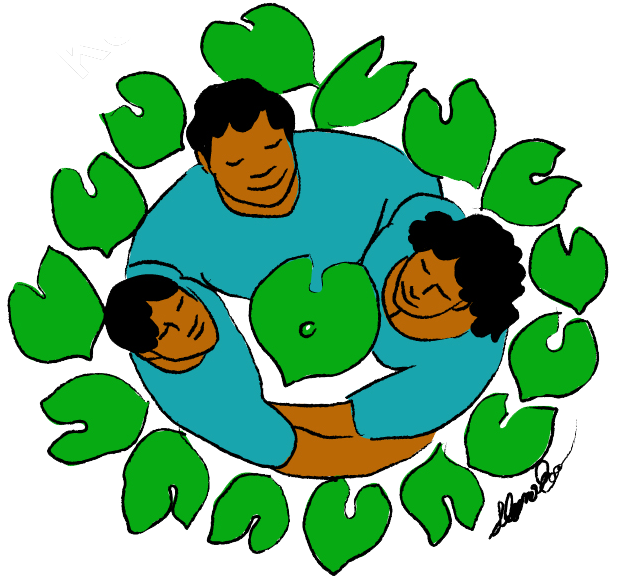Looking Back - Shelter for Abused Spouses and Children
July 1, 1974-June 30, 1975
Above: Vailima and Jerry Watson welcoming people to the shelter
From the 1974-1975 KKV Annual Report
On June 10, 1975 the Shelter for Abused Spouses and Children opened. This was the culmination of dreams and many hours of planning covering almost 10 months.
Shortly after beginning work as the interagency coordinator at Kuhio Park Terrace, Paul Lister was confronted with a number of mothers who were being beaten up or threatened and found there was no place to which to refer them. From this experience Paul called a number of people together from various agencies who were counseling women in similar situations or were faced with the same problem. Out of this initial meeting a planning committee was established to seek a solution.
Late in 1974, the planning committee submitted a proposal to Children’s Hospital for funding under a federal omnibus child abuse grant request. Early in 1975 word was received that the proposed project had been funded.
In February 1975 the YMCA conducted an abuse workshop at Kokua Kalihi Valley. The interest was high among the participants that a shelter home be established as soon as possible. Kokua Kalihi Valley was then approached by the planning committee to be the delegate agency for the project.
In May 1975 a property consisting of three homes (2 attached) was secured. For three weeks planning committee members and friends worked feverishly to renovate the properties for occupancy. June 1, 1975, the manager, his wife, and daughter moved into the home designated for the manager. [Jerry and Vailima Watson]
Between March and June, the planning committee met weekly to work out policies and procedures for the Shelter. It was decided that the primary focus of the Shelter would be to provide a refuge setting for no more than 5 working days for families (non-abusive spouse and children) in abuse situations. Information would be made available to the residents about counseling, legal, financial, and other forms of assistance. The initiative for the utilization of the information would rest with the resident.
In addition to the resident manager, volunteers would be recruited to answer the phone, welcome new residents, and generally to be informed, but informal, friends to the residents.
Additional funds were sought from private trusts and foundations in Hawaii. The future hope is that monies for continued operation, after the initial three-year grant period, will be provided by reimbursement from the Hawaii Department of Social Services and Housing or another major funding source.
See more information about Jerry and Vailima Watson here.





